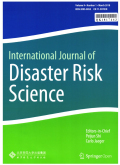- 钛学术文献服务平台 \
- 学术期刊 \
- 医药卫生期刊 \
- 预防医学与卫生学期刊 \
- 国际灾害风险科学学报(英文版)期刊 \
Reviewing the Oceanic Ni(n)o Index (ONI) to Enhance Societal Readiness for El Ni(n)o's Impacts
Reviewing the Oceanic Ni(n)o Index (ONI) to Enhance Societal Readiness for El Ni(n)o's Impacts
基本信息来源于合作网站,原文需代理用户跳转至来源网站获取
摘要:
NOAA's Oceanic Ni(n)o Index (ONI) is used to record for historical purposes the occurrence and duration of El Ni(n)o episodes,based on the monitoring of sea surface temperatures (SSTs) in the central Pacific Ocean.The ONI is used to identify the onset of an above average SST threshold that persists for several months,encompassing both the beginning and end of an El Ni(n)o episode.The first appearance of an anomalous seasonal value of 0.5 ℃suggests with a high probability that an El Ni(n)o could emerge,but for heightened warnings,one must wait for several months.In this article,we proposed that the ONI value of 0.7 ℃ identifies a tipping point at which the El Ni(n)o event becomes locked in,which can provide addi-tional lead time for mitigative actions to be taken by societal decision makers.Our preliminary findings suggest that a first appearance of 0.7 ℃ value could serve as a credible marker of El Ni(n)o's locked-in phase,which can provide additional credibility to the current 0.5 ℃ El Ni(n)o onset indicator for at-risk societies to get ready for El Ni(n)o's foreseeable societal and ecological impacts.

推荐文章
n-Al2O3/Ni电刷镀复合镀层组织与沉积机理
纳米
复合电刷镀
沉积机理
南海海温在两类El Ni?o衰退期的季节响应差异
南海增暖
东部型El Ni?o
中部型El Ni?o
南海在1997/1998年El Ni(~n)o事件后的异常变化
南海
ElNino
异常响应
数值模拟
赤道太平洋上层海洋垂向温度梯度距平与El NI(n)o的关系
垂向温度梯度距平
EOF
Ei(n)o
内容分析
关键词云
关键词热度
相关文献总数
(/次)
(/年)
文献信息
| 篇名 | Reviewing the Oceanic Ni(n)o Index (ONI) to Enhance Societal Readiness for El Ni(n)o's Impacts | ||
| 来源期刊 | 国际灾害风险科学学报(英文版) | 学科 | |
| 关键词 | |||
| 年,卷(期) | 2020,(3) | 所属期刊栏目 | SHORT ARTICLES |
| 研究方向 | 页码范围 | 394-403 | |
| 页数 | 10页 | 分类号 | |
| 字数 | 语种 | 英文 | |
| DOI | |||
五维指标
引文网络
引文网络
二级参考文献 (0)
共引文献 (0)
参考文献 (5)
节点文献
引证文献 (0)
同被引文献 (0)
二级引证文献 (0)
1984(1)
- 参考文献(1)
- 二级参考文献(0)
1987(1)
- 参考文献(1)
- 二级参考文献(0)
1996(1)
- 参考文献(1)
- 二级参考文献(0)
2006(1)
- 参考文献(1)
- 二级参考文献(0)
2015(1)
- 参考文献(1)
- 二级参考文献(0)
2020(0)
- 参考文献(0)
- 二级参考文献(0)
- 引证文献(0)
- 二级引证文献(0)
引文网络交叉学科
相关学者/机构
期刊影响力
国际灾害风险科学学报(英文版)
主办单位:
民政部国家减灾中心和北京师范大学
出版周期:
季刊
ISSN:
2095-0055
CN:
11-5970/N
开本:
16开
出版地:
北京市
邮发代号:
创刊时间:
2010
语种:
eng
出版文献量(篇)
272
总下载数(次)
0
期刊文献
相关文献
推荐文献

 免费查重
免费查重










